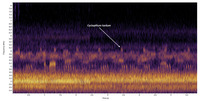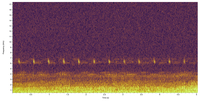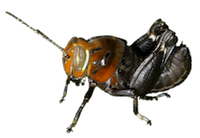| |
Family (Alpha): | |
| View | Gryllidae Members:
| NC Records |
|---|
Cycloptilum tardum Love & Walker, 1979 - Slow-chirp Scaly Cricket |
| No image for this species. |
|
|
|
|
|
Image Gallery for Cycloptilum tardum - Slow-chirp Scaly Cricket
|
 | Recorded by: Steve Hall, Laurie Hamon, Carol Tingley, Tom Howard, and Pat Coin
Moore Co.
Comment: |  | Recorded by: Steve Hall
Richmond Co.
Comment: |
 | Recorded by: Steve Hall, Bo Sullivan, and Jim Petranka
Moore Co.
Comment: 2.1 chirps per second at 5.9 kHz |  | Recorded by: Steve Hall and Bo Sullivan
Moore Co.
Comment: |
 | Recorded by: Steve Hall and Bo Sullivan
Moore Co.
Comment: |  | Recorded by: Steve Hall and Bo Sullivan
Scotland Co.
Comment: |
|

 »
»
 »
»